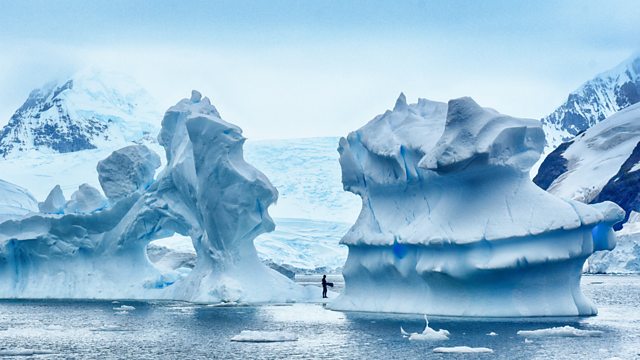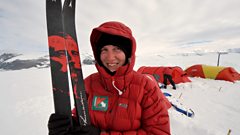Antarctica
It鈥檚 the coldest place on Earth. A place whose sublime beauty is matched by its capacity to kill you, very fast. Shabnam Grewal asks why are we fascinated with Antarctica?
Why would you go to the coldest place on Earth? A place mostly devoid of life, where there are rarely more than a few thousand other humans spread out across a landmass twice the size of Australia. A place whose sublime beauty is matched by its capacity to kill you, very fast.
We are talking about Antarctica. A continent which belongs to no nation has no government and is run according to an international treaty signed nearly 60 years ago.
Shabnam Grewal went there many years ago and knows the joy of being surrounded by ice blue glaciers and the hardships of working in a freezing climate. She talks to others who were drawn there too, by the beauty of the place or in search of knowledge or to test themselves and understand who they really are.
(Picture: A Freediver in Antartica, Credit: Freedive Antarctica / Barcroft / Barcroft Media via Getty Images)
Last on
More episodes
Previous
Clip
-
![]()
Living in Antarctica
Duration: 01:27
Broadcasts
- Mon 27 Aug 2018 12:32GMT成人快手 World Service except News Internet
- Mon 27 Aug 2018 21:06GMT成人快手 World Service except News Internet
- Tue 28 Aug 2018 01:32GMT成人快手 World Service except News Internet
- Mon 3 Sep 2018 05:32GMT成人快手 World Service South Asia
- Sun 5 Apr 2020 05:06GMT成人快手 World Service
- Mon 6 Apr 2020 02:06GMT成人快手 World Service
- Mon 6 Apr 2020 08:32GMT成人快手 World Service
- Mon 6 Apr 2020 12:32GMT成人快手 World Service East and Southern Africa & West and Central Africa only
- Mon 6 Apr 2020 14:32GMT成人快手 World Service Australasia
- Mon 6 Apr 2020 15:32GMT成人快手 World Service except Australasia, East and Southern Africa & West and Central Africa
- Mon 6 Apr 2020 21:06GMT成人快手 World Service except East and Southern Africa
Get the podcast
Subscribe or download individual episodes for free
Why do we look the way we do?
Tattoos, trainers, jeans, hair, ties ... why?
Podcast
-
![]()
The Why Factor
The extraordinary and hidden histories behind everyday objects and actions



